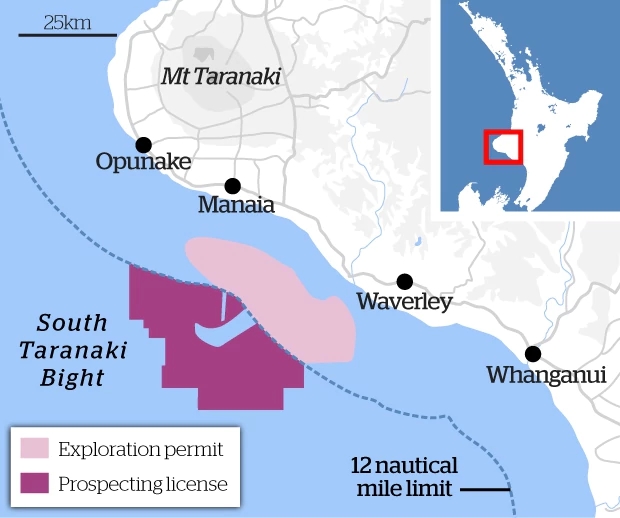Despite our growing need for natural resources, should we still retrieve the resources while we might pay a huge price? In August 2017, the first large-scale seabed mining activity in human history has been approved with a 2-2 vote by the Environmental Protection Authority (EPA): the company Trans-Tasman Resources can now mine Iron sand in South Taranaki in New Zealand. Although it will bring more iron ores and job positions, it will certainly bring harmful effects on marine ecosystem and humans, and the severity of the adverse impact on seafloor ecosystem is still unclear.

Map of Seabed Mining Site: Credits: Frances Cook, NewYork Time
Location and Technology
The mining site is over 25 km offshore along the Taranaki coastal-line. Trans-Tasman Resources will remove 5 million tons of iron sand annually for up to 35 years from the around 19 to 42m depth underneath the ocean surface. The total mining area will be 65.76km2, starting from 5km2 in the first year.
They will use an integrated mining/processing vessel attached to a suction crawl. The suction crawl would remove anything on the seedbed including the sea-organisms on the seabed and form a pit hole, then separate the iron ores by depositing other materials including sands and dead organisms into the sea. Then the minerals will be exported onshore directly from the storage ship. The short video below explains the mining technology clearly.
https://www.youtube.com/watch?time_continue=2&v=nbOvX8eoOSw
Impacts
Trans-Tasman Resources is consent to have adverse effects on the marine lives or marine environment. During their mining procedure, the entire seabed will be removed, along with the sessile organisms, such as seaweeds. The motile creatures such as fishes and mammals would be affected by habitat loss, as well as the noise and/or electromagnetic radiations. Some mammals might experience negative behavior changes including extreme avoidance of their habitats; some could become less capable fleeing from their predators due to the noise effects, and some will lose their food resources. This would lead to species loss, and eventually biodiversity loss.
Humans health might also be affected by this project eventually. As New Zealand also has a long history of commercial fisheries, people might be harmed from the possible bioaccumulation of heavy metals in their seafood. The toxicity generated from the mining procedure can be eaten and stored by the fishes, and eventually consumed by people. This could possibly damage humans’ organs and/or nervous systems. Since it is still unclear about how far exactly can the pollutions in the mining area span, it would be even more difficult to prevent the health issues in humans.
Now what?
Although we now understand the risks and impacts of the mining project a little bit, unfortunately, it would be almost impossible for us to stop the mining project now, according to the approval agreement. However, as a part of the public, we can still put pressure on the government to allow the scientists monitor this project closely, and develop new regulations for this type of mining activities in future. With more measurements, scientists can then reduce the uncertainty, and manage the environmental impact more adaptively in future.
-Lilo Wang
